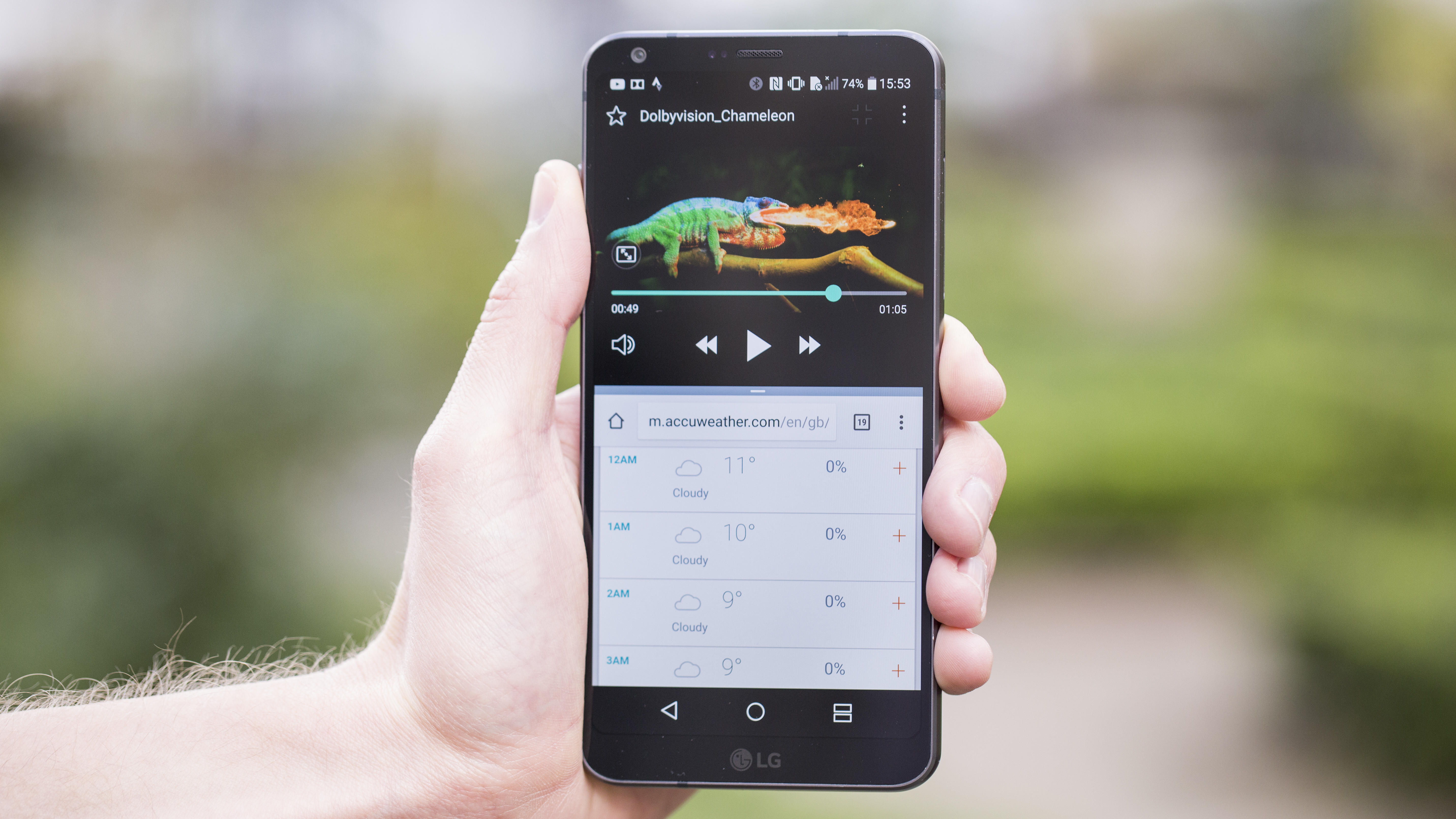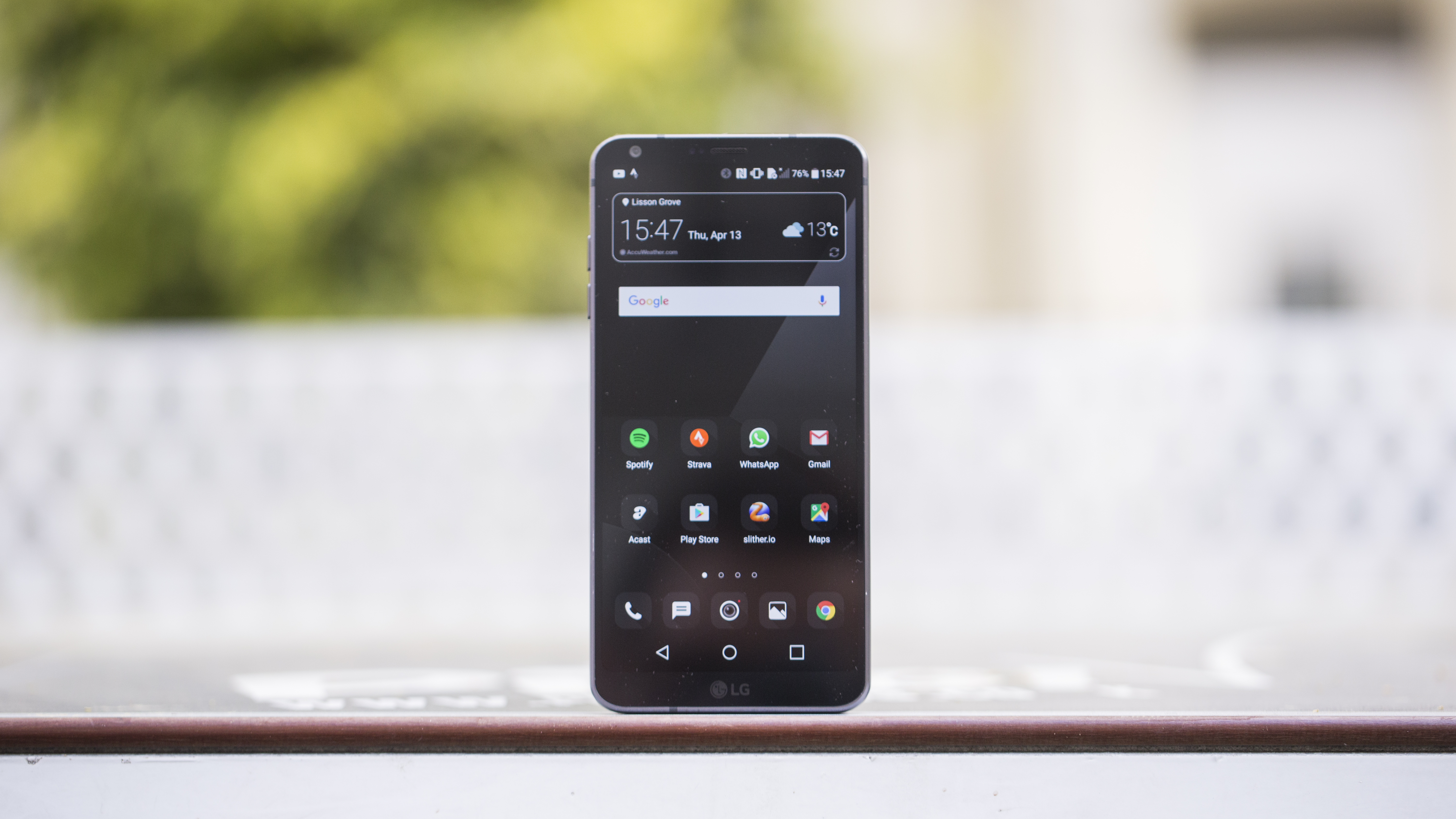Why you can trust TechRadar
Screen
- Super-wide 18:9 aspect ratio doesn't add much
- High resolution and supports HDR content
The 18:9 screen, (which is branded ‘FullVision’) is created by LG’s own screen division, LG Display. It extends the QHD resolution of its predecessor, making it ever more widescreen to boost the pixel count to 2880 x 1440 and uses LCD technology rather than OLED.
The corners are even curved to keep the aesthetic of the handset, rather than the sharp design most phones pack. It's an interesting move, but doesn't really add much more than novelty.

The lack of OLED is key as it means the LG G6 is not Daydream compatible, so Google's new VR headset won't work with the phone, which is a real shame.
There's not even a new VR offering from LG (although 2016's 360 VR headset was hardly a strong candidate for virtual reality experience of the year) so you'll be limited to Cardboard headsets if you're desperate to enter a virtual world.
While it lacks the colorful pop of the Samsung Galaxy S7, for instance, with its Super AMOLED screen, there's a vivacity that's well complemented by the longer display.

What is impressive is the addition of Dolby Vision / HDR 10 support for all manner of HDR content.
LG told TechRadar that it's been working with Netflix and Amazon to bring that content to the mobile app.
This means you'll get extra color and detail to your movies that are encoded in this format, bringing a superb experience to the mobile. However, we could only test this by watching the pre-installed Dolby Vision demonstration, which is always going to be impressive.
It's also worth noting that you'll need to be on the top-tier Netflix plan to access this quality - which is thoroughly not worth it if you're just going to be watching on a phone.
The screen on the LG G6 is impressive, but as suspected the larger dimensions are, largely, not much use in apps. What's surprising is some games work better in the larger format - when you open some titles you're presented with a little logo in the top right-hand side of the screen that lets you extend the contents a little further, and gaming seems to deal with this flawlessly.

Most other titles, those which aren't the inbuilt native apps, will just give you a white bar at the bottom where the home and back buttons pop up - it's not that useful, and, as suspected, video doesn't really stretch out that well.
The Always On Display is still a good move - it's something that's both useful and visually appealing on this phone. However, when you're in the dark it's clear to see that the LED lights at the bottom of the screen are illuminating it, with a slight flare protruding up the display.
Of course, it's not a massive problem, but at the same time it doesn't make the G6 look terribly premium.

It's still a curious decision by LG to use LCD over OLED for a number of reasons. Firstly, the contrast ratio (while good) is still not as deep as on Samsung's devices, with the blacks not as true as they could be (and using LCD rules out Daydream support, as previously mentioned).
LG is still using the pervasive display on the lock screen (known as the Always On Display on Samsung phones), so you can see the time without needing to turn on the phone.
Both South Korean brands claim the same battery life reduction for using this feature, but surely it would be more efficient on an OLED panel.

The reason this is so curious is because LG is such a big advocate of OLED panels, and the quality they bring, in the TV space, so believing in LCD technology here still is odd.
And then we get into the awkward mention of the Samsung Galaxy S8 - that's a phone which is all screen and doesn't cost that much more... and in our view, is a far more stunning device when all things are considered.
Not to say that LG hasn't pulled off a nice-looking device with an attractive screen... but it's unfair that Samsung has moved the goalposts so considerably when LG looked like it was just catching up.

Gareth has been part of the consumer technology world in a career spanning three decades. He started life as a staff writer on the fledgling TechRadar, and has grew with the site (primarily as phones, tablets and wearables editor) until becoming Global Editor in Chief in 2018. Gareth has written over 4,000 articles for TechRadar, has contributed expert insight to a number of other publications, chaired panels on zeitgeist technologies, presented at the Gadget Show Live as well as representing the brand on TV and radio for multiple channels including Sky, BBC, ITV and Al-Jazeera. Passionate about fitness, he can bore anyone rigid about stress management, sleep tracking, heart rate variance as well as bemoaning something about the latest iPhone, Galaxy or OLED TV.
